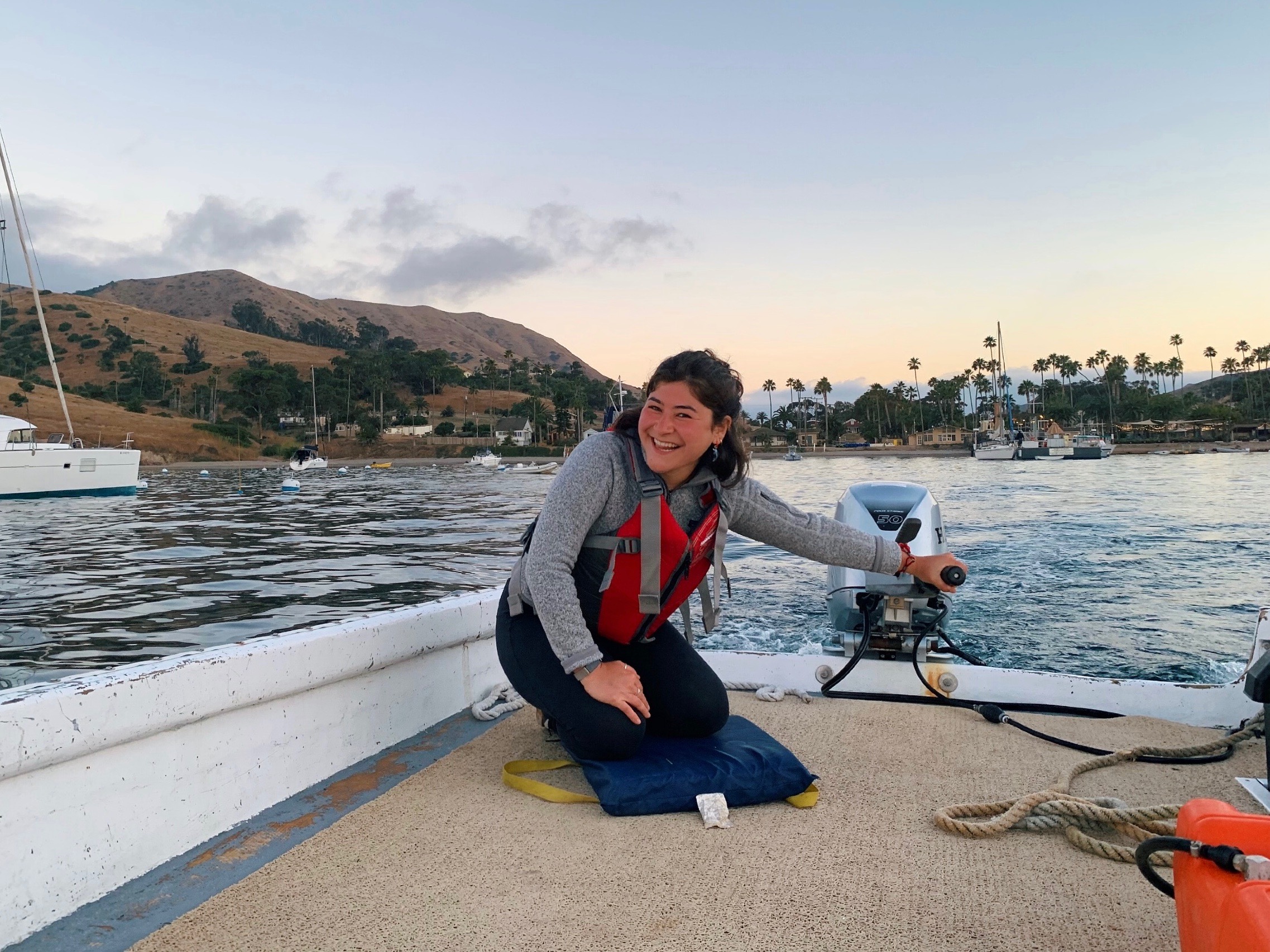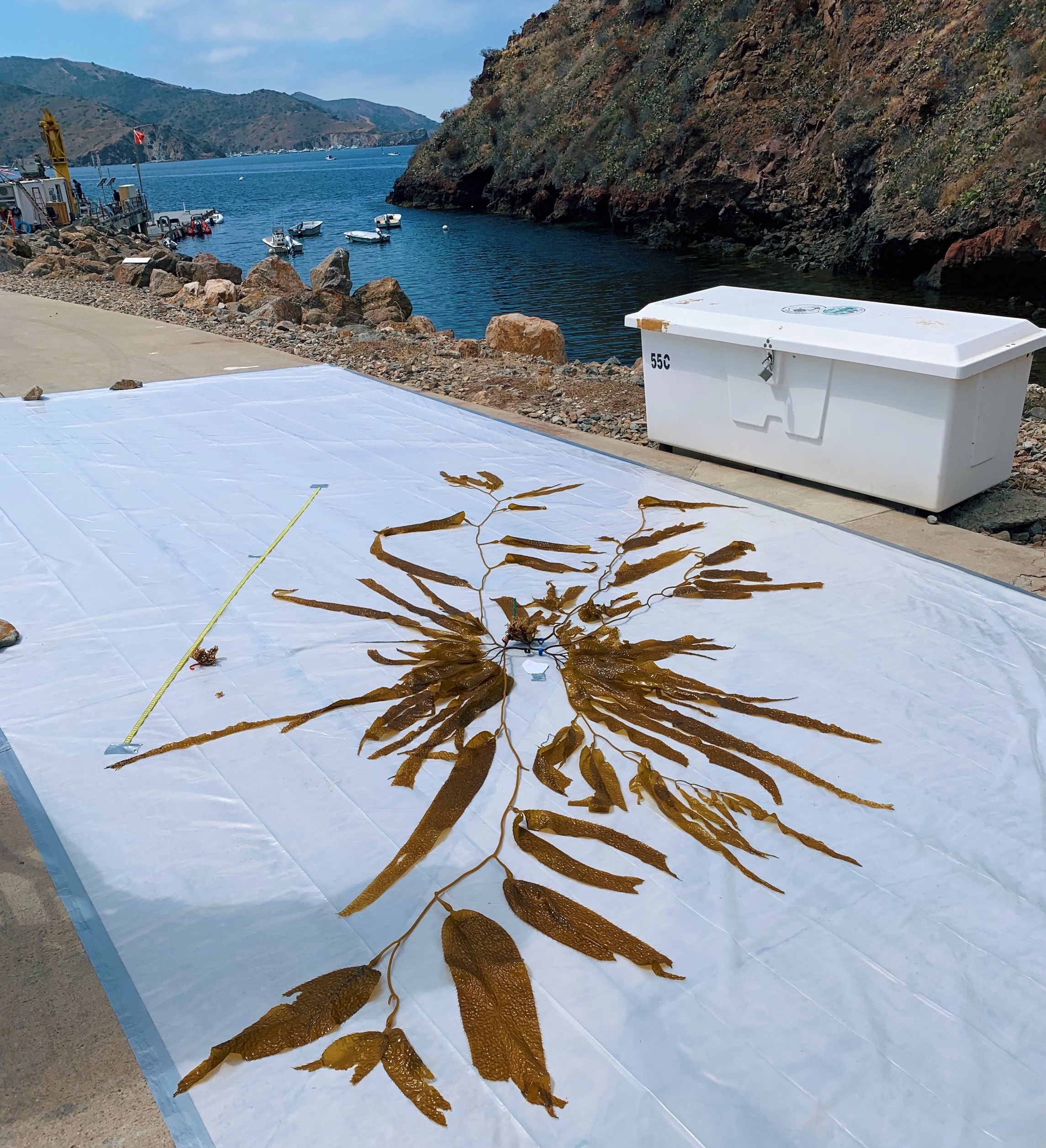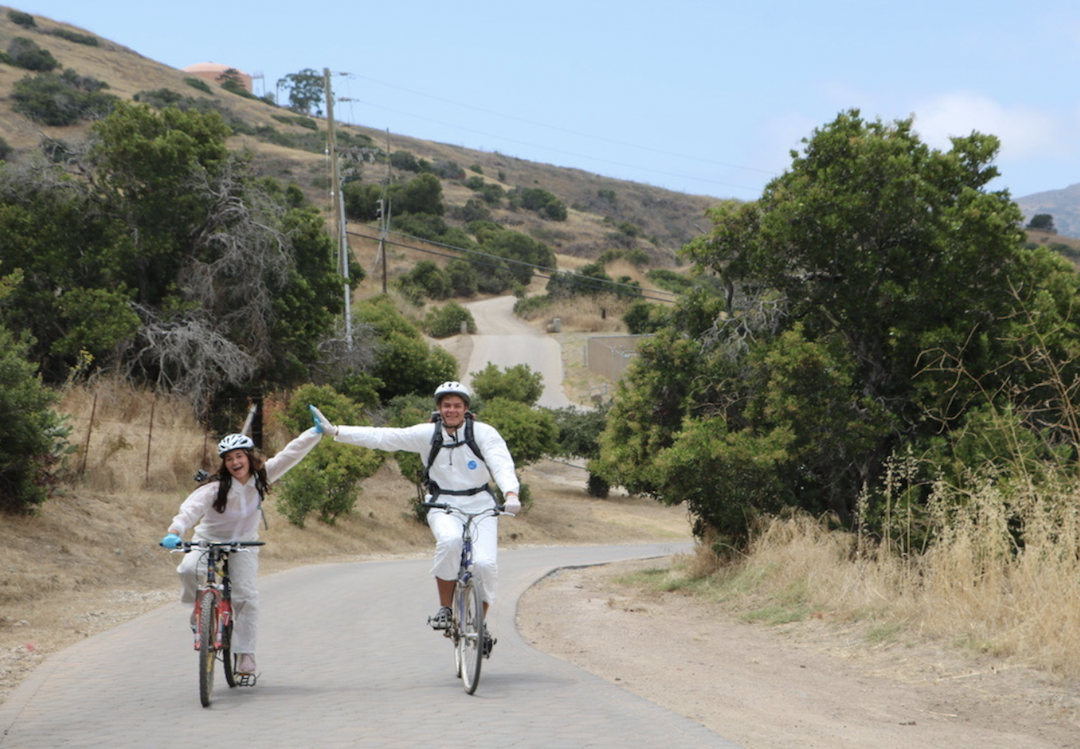By: Sachi Elias
Each day a new story hits the stands about the state of our global climate—oceans rising, forests burning, temperatures spiking. However, as environmental scientists, it is our duty and privilege to foster solutions for our struggling planet. Many American universities are at the forefront of climate innovation and USC is no different. Whether it be mycology, GIS or conservation biology, we as Trojans have learned to respond to our earth’s issues with proactivity and passion. My personal favorite climate solution stems from a project I have worked on since the beginning of my sophomore year…
Kelp—the word does not often spark enthusiasm. For my first 18 years on this planet, I lived in New York City, and I hadn’t once seen the protist in real life; it seemed like a made-up myth, “underwater forests of lush green”, how was it possible? However, in my time at USC, I have had the great pleasure of examining this life form in all its wonders. Whether it be its extraordinary growth rate or its strengthening foundation of the California ecosystem, the wonders of kelp never cease to amaze me.

However, this amazement reached new heights as I discovered Dr. Diane Kim’s research at USC’s Wrigley Institute for Environmental Studies (WIES). Together with Marine BioEnergy Inc., we’ve aimed to bring kelp from our coasts to unchartered territory… the open ocean. In this environment, kelp undergoes a depth cycling mechanism, similar to an elevator, traversing between 8 to 80 meters in the water column. Pelagic kelp requires this process because the surface waters may offer endless sunlight throughout the day, but the open ocean’s depths are nutrient-rich in comparison to the surface. Thus, in order to optimize kelp’s growth capacity of one-meter-a-day, it must be cycled.
Although I’ve had the pleasure of volunteer diving for the kelp project for the past four semesters, being able to spend the first two months of my summer at WIES this year as a Zinsmeyer Intern brought my involvement and training to new heights. Each day at work brought excitement and challenges.

In May, our study began with young kelp (10 cm in length), but over the course of the summer we observed extensive development, marking varying stages of progress as the protist matured. One week we would consider the number of pneumatocysts and stipes on an individual, but the next week we focused on apical meristems and total lengths greater than a meter. By the end of the summer, our August kelp harvest revealed many species that grew over 4-6 meters! Additionally, I continued to hone my skills as a research diver, logging 40 news dives, completing blue water training, and (attempting to) master the art of underwater data collection (although there’s always room for improvement).

As I enter my senior year of university, I am also beginning my third year with the kelp project. It has been an honor to see this project through my development as not only a student and researcher, but also a diver. There have been many obstacles encountered, from overcoming physiological challenges of the kelp itself (i.e. pneumatocysts bursting at depth) or technological failures in the open ocean structure (i.e. sinking to depth); Dr. Kim and the team at Marine BioEnergy have repeatedly worked through these hardships to see the experiment through. If we can optimize kelp’s growth rate in the open ocean, an entirely new class of biofuels could eliminate many of the pressures seen in less sustainable fuel choices. As environmental scientists, we understand the nature of what is at stake, and thus, I hope to continue with this project for the following year and see it through to its full capacity.
Thank you to Dr. Diane Kim, Dr. Ignacio Navarrete, Eric Castillo, the entire team at WIES, Marine Bioenergy Inc., the SURF fund, Mr. Andrew Zinsmeyer and Mrs. Barbara Bochner—I am deeply appreciative of the opportunity to have conducted this work over the past summer and would not have been able to do it without your guidance.






